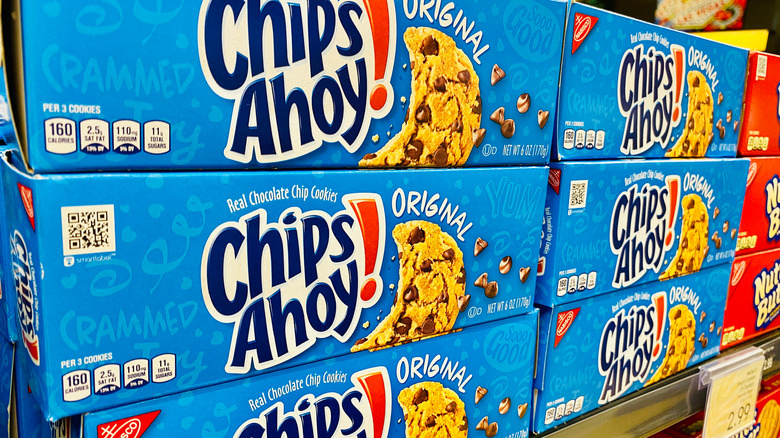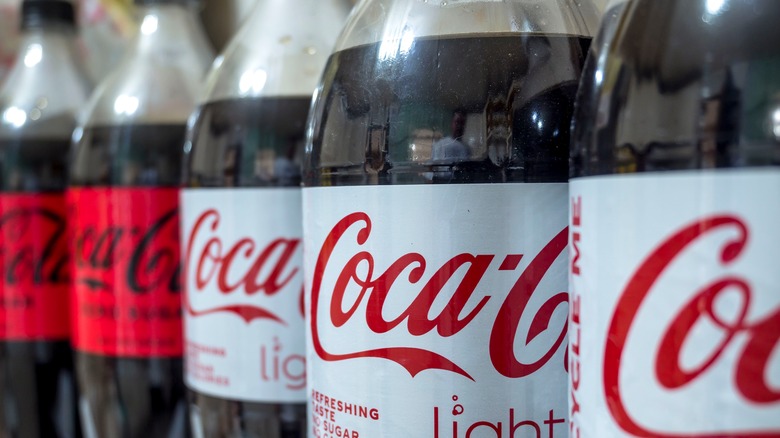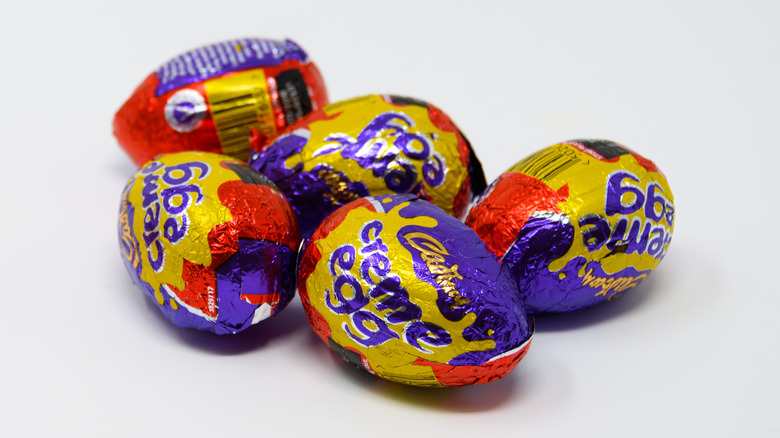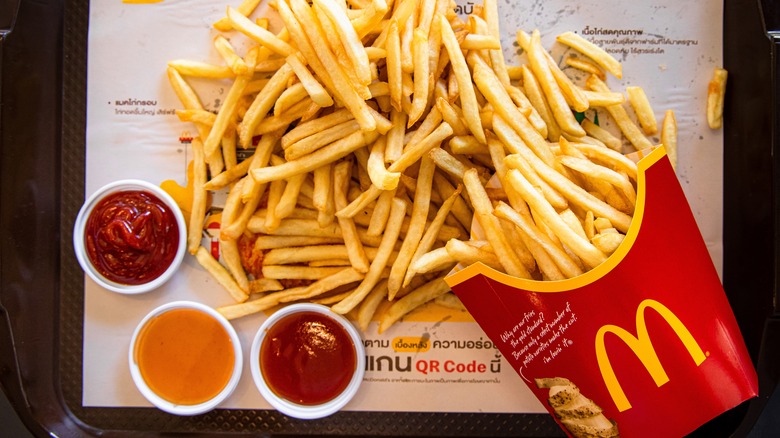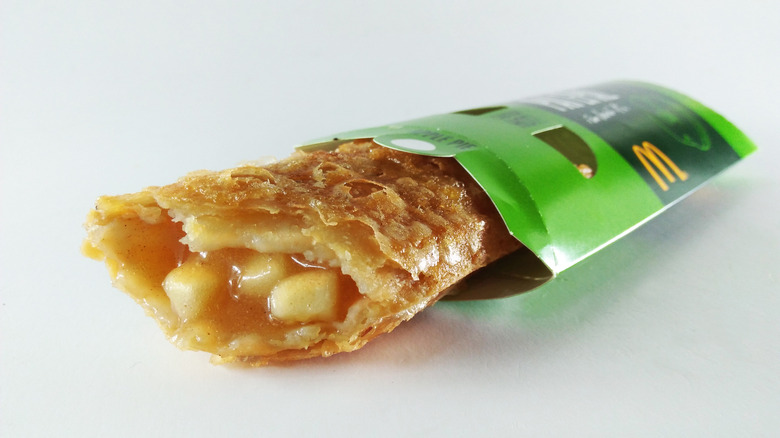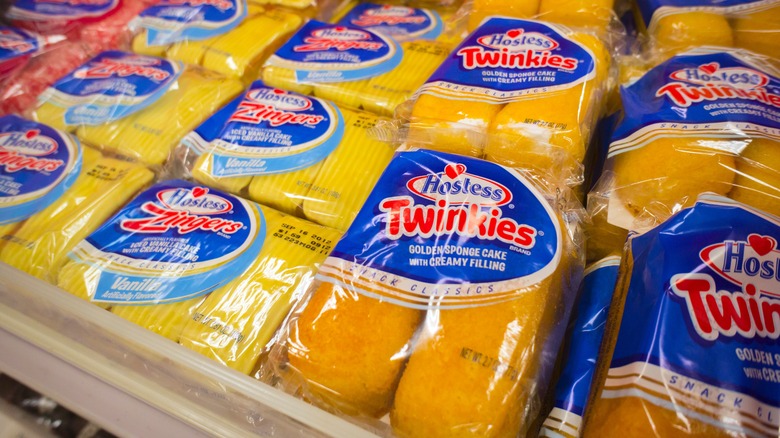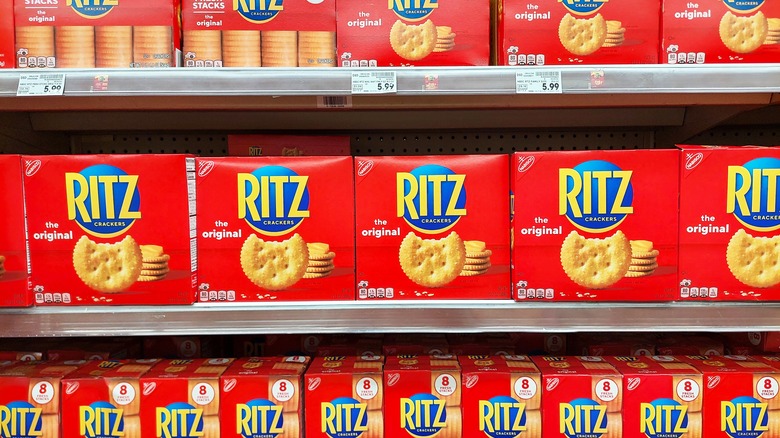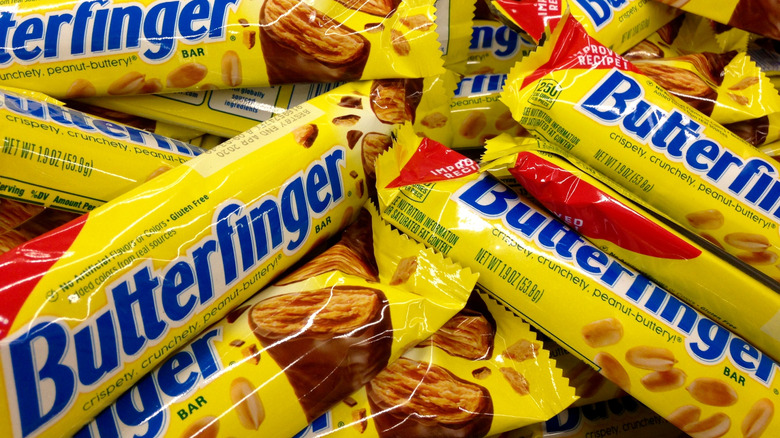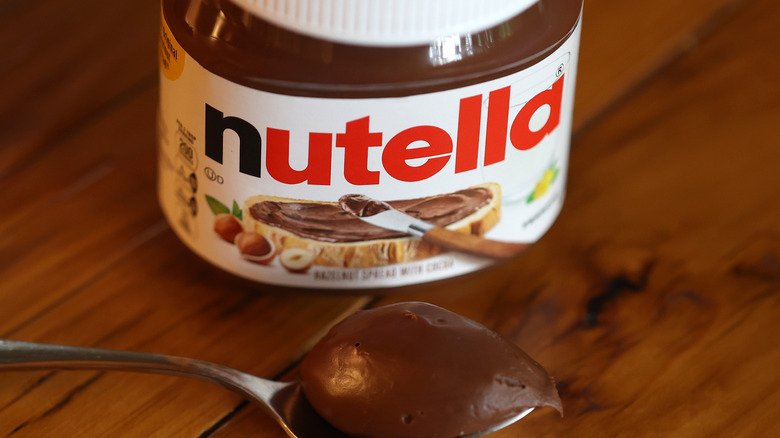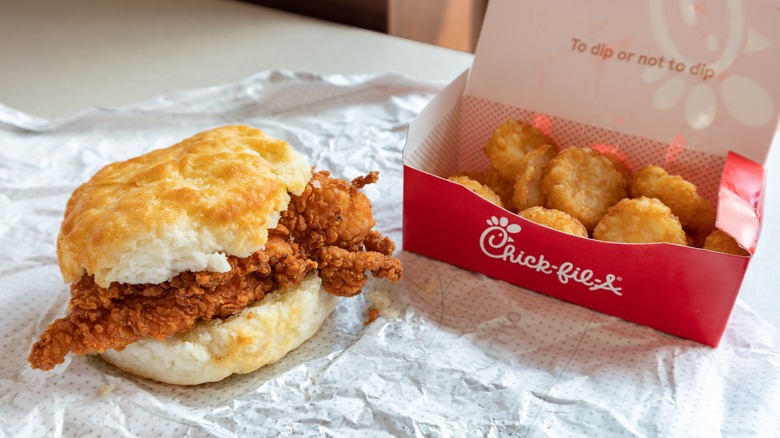9 Original Recipes That Changed For The Worse
If you've ever taken a bite out of a food you've eaten for years and suddenly felt something just wasn't quite right, you're not alone. Chances are the creators of your favorite meal or candy tweaked its formula. Sometimes it's such a minute alteration that you can't even put your finger on what's different. You just know something feels off, and you're not a fan.
Whether it's done for nutrition or cost reduction, it's not uncommon for businesses to take the risk of changing their original food items' recipes. In March 2024, Chips Ahoy made its biggest recipe change in 10 years, but it made sure to give people a heads up. Unlike the famed chocolate chip cookie brand, other companies often pull a fast one by not even announcing to the public that a change has been made. Loyal consumers are left to detect the adjustment and rally together to reminisce about the classic formula. Fine-tuning items like Coke or McDonald's french fries can be detrimental to a die-hard fan who is connected with the food for nostalgic reasons. It's like catching a difference in your grandma's cooking. Even if Grams herself was the one attempting to alter it, you wouldn't want her to change the recipe you've grown to love your whole life. More often than not, you're looking at a backfire as these brands found out.
Coke
Coca-Cola's latest Creations flavor tastes like salty tears. This was purposely done by the company to mimic the mineral makeup that falls from our eyes as we cry, hence the recent addition to the line being named Happy Tears. Still, no waterworks could compare to the ones fans shed in 1985 when Coca-Cola decided to change their 99-year-old original drink. Only this time, it wasn't out of joy.
The marketing fiasco started when Coca-Cola reformulated the soft drink to be sweeter and lighter in hopes of reversing its declining sales and keeping up with its competitors. The revised beverage, infamously known as "new Coke," was widely rejected and met by consumer protests and boycotts. The negative reactions prompted the return of the original refreshment, now called Coca-Cola classic, barely two-and-a-half months later. Although this outcome wasn't planned for, new Coke fiasco ironically achieved what the multinational corporation was after: Increased fan loyalty as people rediscovered their strong attachment to Coke.
Cadbury Creme Eggs
Easter of 2015 felt different for some candy connoisseurs when Cadbury admitted they tweaked their popular Creme Eggs. Once made with Cadbury Dairy Milk chocolate, the shells were switched to being made using a "standard, traditional Cadbury milk chocolate," according to a spokeswoman quoted by CNN. The yellow and white fondant filling within the egg remained, but the change in the chocolatey coating was evidently enough to throw the public off. The drop in Creme Egg sales, which fell by more than $14 million, was clear proof.
As if a change to the recipe wasn't enough, that same year Cadbury also lowered the number of Creme Eggs sold in a package from six pieces in a box to five. This alone was an issue to customers who waited for the candy to come out each year, only to be disappointed when they learned they were being shorted. And fewer eggs didn't equate to a lower cost either. People were essentially paying the same price for less product, and it did not go over well.
McDonald's french fries
There are few fast food pairings that are as iconic as french fries and, well, just about anything else on the menu. It's the reason customers will go to a particular chain simply to have their potato of choice, whether it's Burger King's thick, pale variety or Arby's crinkle-cut, lightly-salted version. But McDonald's famous shoestring fries will always take the cake as a cult-favorite.
So when McDonald's made a change to their most beloved menu item in 1990, it wasn't warmly received. The Golden Arches' french fries went from a decades-old tradition of being fried with mostly beef tallow to 100% vegetable oil. It was a health-conscious decision following the commotion raised by Phil Sokolof, a businessman who targeted McDonald's as part of a crusade against cholesterol stemming from a heart attack he suffered in 1966. Though the change was made to placate Sokolof and his National Heart Savers Association, McDonald's took a hit when people noticed the fries had a less meaty flavor and higher amount of trans-fat. Its stock fell by over 8%, according to Atlas Obscura.
To make matters worse, McDonald's incorporated beef flavors to its fries to compensate for the less appetizing taste. However, it was not transparent about the addition, angering vegetarians, vegans, and Hindu Americans who were unaware of the changes made to the fries they were eating. This series of alterations led to the fries we have today, with zero trans-fat and clearly labeled natural beef flavors. But if you need to know exactly what's in your food, maybe make your own copycat McDonald's fries instead.
McDonald's Apple Pie
Trying yet again to be healthier, McDonald's tinkered with another of its famous menu items: The apple pie. It targeted the dessert item in the early 1990s when franchises stopped deep-frying the gooey, crispy pies and began baking them instead. The pies had been fried since they were released as the chain's first dessert in the late '60s, so baking them proved to be a large change taste-wise. The move left people yearning for the flaky, crispy crust of the original version and with a desire to fill their McDonald's deep fried apple pie void elsewhere.
Yielding similar results, McDonald's has altered the apple pie recipe more recently. In 2018, a new version of the baked apple pies were introduced that "had fewer ingredients such as sugar, sliced 100% American grown apples and a bit of cinnamon," according to a McDonald's press release. The nutritional information raised question marks, though, as the original fried apple pie consists of 220 calories and 10 grams of sugar in comparison to the new baked version, which comes out to 230 calories and 14 grams of sugar.
Just as before, customers miss the previous recipe, creating a pool of people that want a return to either the pie's fried exterior or the pre-2018 baked apple pie. Opportunities to satisfy your cravings are sadly scarce, though, because Downey, California is now the last McDonald's location serving fried apple pies in the continental U.S. Your next closest choice is Hawaii.
Twinkies
Regular grocery shoppers have learned the ins and outs of their local supermarkets, memorizing where the best snacks are hidden and what route takes them to the bread the fastest. Along the way, shoppers likely don't bat an eye anymore when they see a section dedicated to one of America's most popular food and snack brands — Hostess. The bakery company's cherished products, from Ding Dongs and Ho Hos to Fruit Pies and Snowballs, can almost always be found lining the checkout aisles or among other sweet treats. So it's crazy to think there was a time when some of Hostess' established favorites couldn't be found on shelves.
The absence of Twinkies was felt in late 2012 when the Original Golden Snack disappeared from grocery stores as a result of Hostess going bankrupt. It wasn't until Metropoulos & Co. and Apollo Global Management purchased Hostess for $410 million in 2013 that Twinkies had a chance of being revived. The two groups quickly began revamping Hostess, starting with its golden sponge cake's delivery system.
In order to give Twinkies the necessary amount of time to make it through warehouse distribution, its recipe was changed to extend its shelf life from 25 days to 45 days, and then eventually 65 days. It wasn't explained how the companies went about extending the product's longevity. All people knew was that when the Twinkies finally came back to stores, it seemed drier and harder. Dick Schindler of Today noted that the spongey treat had less of a "chemical aftertaste," but felt less fresh.
Ritz Crackers
Like too many food companies, Nabisco didn't disclose the changes to its popular Ritz Crackers. But long-time enjoyers of the buttery, grooved cracker can't help but compare how the beloved snack tasted when it first came out in 1934 versus today. Ritz Crackers are now much more crumbly and sometimes don't even make it out of the plastic sleeve without falling apart. While this flaky, grainy texture will serve well as a topping for something like a classic pasta e fagioli recipe, it might not hold up to the task of scooping dips or holding spreads anymore.
People on Reddit complained about the issue while noting that they're not sure when the change took place. One user said people are essentially buying "4 bags of crumbs in every box," while another claimed the new version now "look[s] and taste[s] like styrofoam." One commenter theorized that the change in Ritz Crackers' composition is because of the U.S. Food & Drug Administration's ban against trans fat, which could have affected the taste and texture. The decline of these characteristics in Ritz Crackers has left some people looking for alternative brands.
Butterfinger
Have you ever wondered what the real reason Butterfingers don't taste the same anymore is? If so, you're not the only one to ask that question. Many people that previously enjoyed the buttery candy bar have noticed a change, too. That's because in 2018, Ferrara Candy Company bought Nestle's line of sweet treats. Wanting to revamp the products' formulas, Ferrara disregarded the iconic "Nobody lays a finger on my Butterfinger!" slogan and altered the candy bar's recipe.
The new formula resulted in a more chocolatey coating made with real milk in addition to a stronger peanut flavor and no artificial preservatives. Despite these seemingly innocent and even beneficial tweaks, fans of the original did not enjoy the change in taste. Former Butterfinger-lovers described the renovated product as "trash," stating they would no longer purchase the item until it returned to its days of yore, according to Business Insider.
Nutella
Ferrara clearly had a "don't stop, won't stop" mentality. Just a year before acquiring Nestle, the candy company decided to make adjustments to its widely loved commodity, Nutella. This change consisted of an increase of skimmed milk powder, which the company claimed would "improve the overall quality of the milk content and ensure a better consistency of [their] unique taste," according to Time. And though Ferrara stated the amounts of such elements have not changed, The Hamburg Consumer Protection Center found the sugar content in Nutella had also increased while the fat and cocoa content decreased.
Such alterations also resulted in a slightly lighter color that alerted observant consumers that some unwelcomed fine-tuning to Nutella had occurred. Upset that their iconic chocolate hazelnut spread was tweaked, Buzzfeed reported that people turned to social media to voice their displeasure. A mix of posts contained customers saying the perfectly-fine recipe should've been left alone and that they would stop buying Nutella.
Chick-fil-A chicken
After a decade of its No Antibiotics Ever (NAE) pledge, Chick-fil-A announced in March 2024 that it would make a shocking switch by allowing the use of No Antibiotics Important To Human Medicine (NAIMH) chicken. This shift means that the fast food restaurant had abandoned its commitment to never using chickens that had been given antibiotics while being raised. Chick-fil-A will, instead, only leave out the antibiotics that are frequently used as medication to treat people. It also permits the use of animal antibiotics if the animal were to become sick. The drastic change was made to "maintain supply of the high-quality chicken you expect," according to a company statement.
While Chick-fil-A isn't the only company to backtrack on its original mantra, the allowance of antibiotics in food can have negative effects on human health and well-being. Healthline reports that not only do antibiotics disrupt the gut microbiome, but that regularly consuming them may lead to particular strains of bacteria becoming resistant to the medicine once it's needed for treatment.
